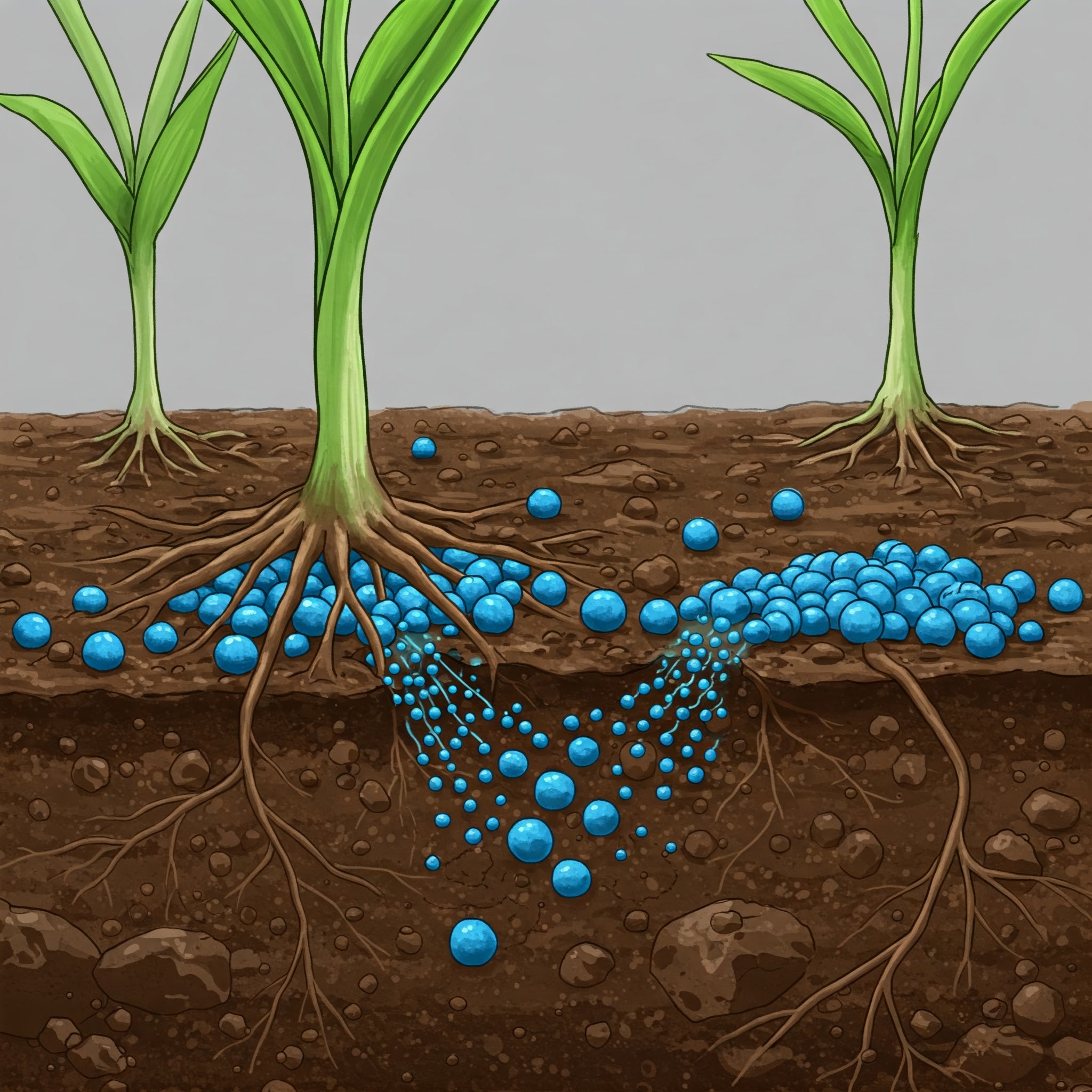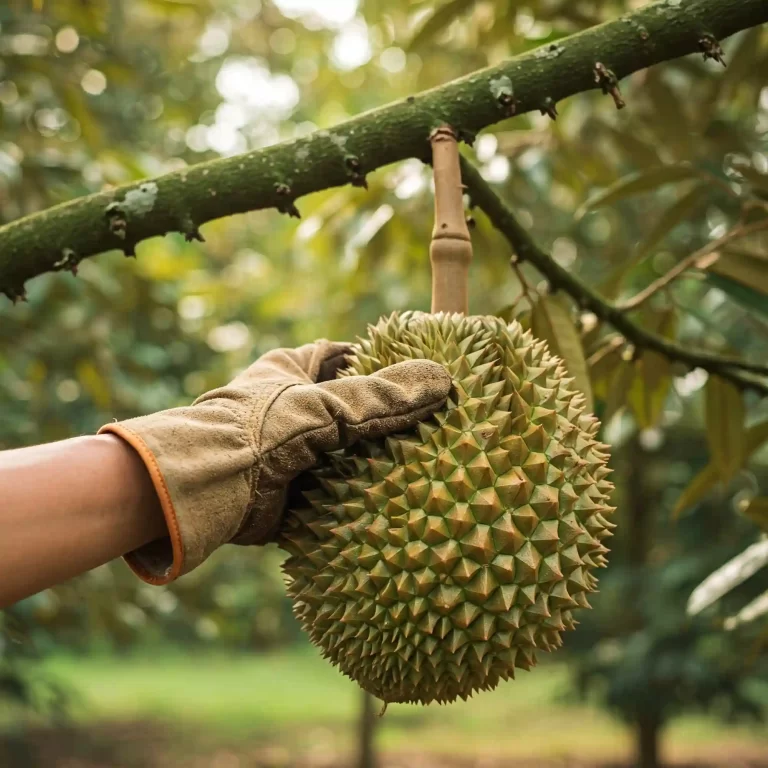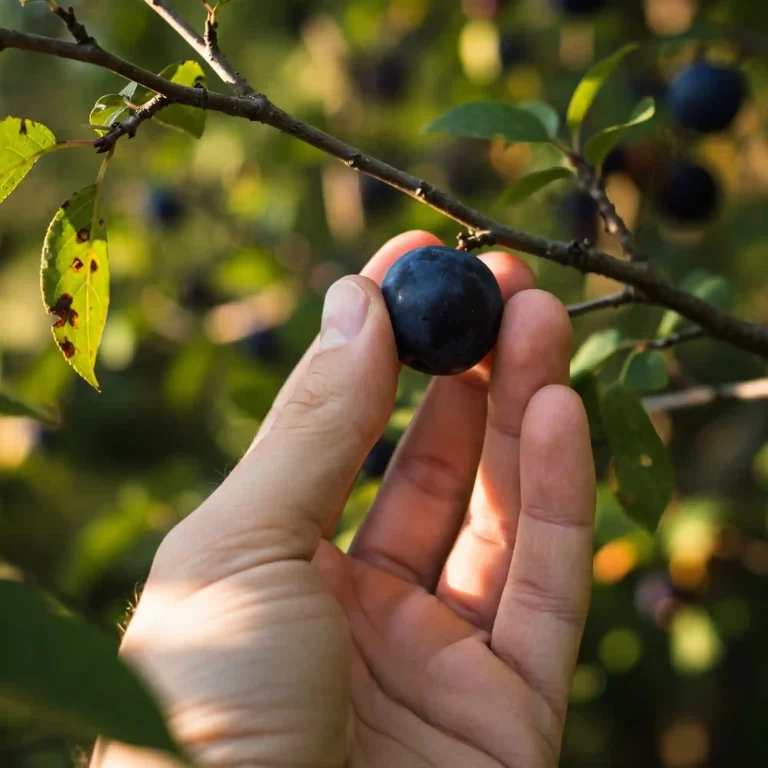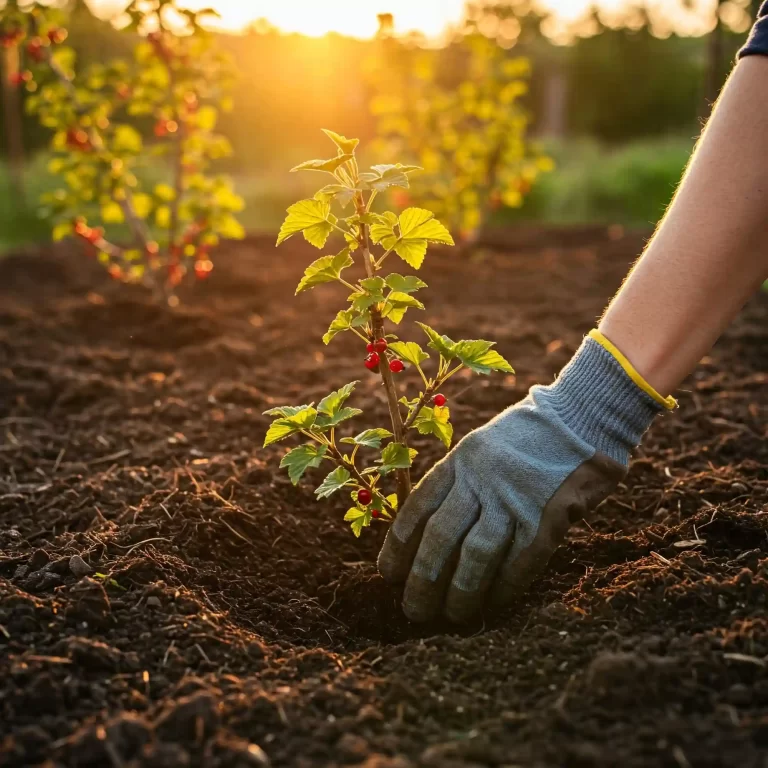Are you tired of seeing your spring garden struggle to thrive, despite your best efforts? It’s frustrating to watch plants wither and blooms fade when you’ve invested time and care. You’re not alone. Many gardeners face this challenge, often due to inadequate or incorrect fertilization. But what if there was a way to ensure vibrant growth and abundant blooms this spring? I’ve found that the key lies in understanding and selecting the right “Spring garden fertilizer options.” Let’s dive into how you can transform your garden with the proper nutrients, and I’ll share my experiences and insights to help you make the best choices.
Organic Spring Garden Fertilizer Options: Nourishing Naturally
When I think about starting my spring garden, I always begin with the soil. You know, it’s the foundation of everything. And for me, nothing beats organic “Spring garden fertilizer options.” They’re not just about feeding the plants; they’re about nurturing the entire ecosystem in your garden. I’ve seen firsthand how using organic fertilizers can transform soil from lifeless and compacted to rich and teeming with life.
What are the best organic spring garden fertilizer options?
Compost, well-rotted manure, and bone meal are stellar choices. Compost, the black gold of gardening, is a powerhouse of nutrients. It’s made from decomposed organic matter, so it’s a slow-release fertilizer that feeds your plants steadily. I’ve found that incorporating a few inches of compost into the top layer of soil before planting makes a noticeable difference. You can create your own compost at home, too, which is a fantastic way to recycle kitchen scraps and yard waste.
Manure, especially from cows or horses, is another excellent option. It’s rich in nitrogen, which is crucial for leafy growth. But be sure to use well-rotted manure, as fresh manure can burn your plants. Bone meal, made from ground animal bones, is a fantastic source of phosphorus, essential for root development and flowering. I often mix bone meal into the planting hole when transplanting seedlings.
How to Grow a healthy garden with organic fertilizers.
To grow a healthy garden with organic fertilizers, I always start with a soil test. You know, it helps me understand the existing nutrient levels and pH balance. Based on the results, I then amend the soil with the appropriate organic fertilizers. For instance, if the soil is low in nitrogen, I’ll add more compost or manure. If it’s lacking phosphorus, bone meal is my go-to.
I also practice crop rotation. You know, it helps prevent nutrient depletion and reduces the risk of pests and diseases. For example, I might follow a heavy feeder like tomatoes with a light feeder like lettuce. I also mulch my garden beds with organic matter, like straw or shredded leaves. It helps retain moisture, suppress weeds, and adds nutrients as it decomposes.
The benefits of using organic “Spring garden fertilizer options.”
I’ve learned that organic fertilizers offer numerous benefits. For one, they improve soil structure. You know, they add organic matter, which enhances water retention and aeration. This creates a better environment for beneficial microorganisms. They also release nutrients slowly, providing a steady supply to your plants. This reduces the risk of nutrient burn, which can happen with synthetic fertilizers.
Organic fertilizers are also environmentally friendly. You know, they reduce the need for synthetic chemicals, which can leach into groundwater and harm wildlife. They also promote biodiversity by supporting a healthy soil ecosystem.
Understanding the difference between compost and manure.
Compost and manure are both excellent organic fertilizers, but they have distinct differences. Compost is made from a variety of decomposed organic materials, so it has a balanced nutrient content. Manure, on the other hand, is primarily animal waste, so it’s richer in nitrogen.
I’ve found that compost is ideal for general soil improvement, while manure is better for boosting nitrogen levels. You know, it’s particularly beneficial for leafy greens and other nitrogen-loving plants. However, as I mentioned, always use well-rotted manure to avoid burning your plants.
How to Plant organic fertilizers correctly for maximum effectiveness.
To plant organic fertilizers correctly, I incorporate them into the top layer of soil before planting. For compost, I spread a few inches over the soil surface and mix it in. For manure, I use a similar approach, but I’m careful not to overdo it. You know, too much nitrogen can lead to excessive leafy growth at the expense of flowers and fruits.
For bone meal, I mix it into the planting hole when transplanting seedlings. I also use it as a side dressing for established plants. You know, it provides a steady supply of phosphorus throughout the growing season.
I’ve also learned that timing is crucial. I apply organic fertilizers in early spring, just before or as new growth begins. This gives the plants the nutrients they need for the growing season. I also reapply fertilizers throughout the season as needed, especially for heavy feeders like tomatoes and peppers.
Case Study: Transforming a Clay Soil Garden
I once worked with a client who had a garden with heavy clay soil. You know, it was compacted and poorly drained, and the plants were struggling. We started by incorporating a significant amount of compost and well-rotted manure into the soil. You know, it helped improve soil structure and drainage. We also added bone meal to provide phosphorus for root development.
Over the next few seasons, we continued to add organic matter and practice crop rotation. You know, the soil gradually improved, and the plants began to thrive. The client was amazed at the transformation. You know, it showed me the power of organic fertilizers in creating a healthy and productive garden.
Nutrient Content of Common Organic Fertilizers
| Fertilizer | Nitrogen (N) | Phosphorus (P) | Potassium (K) | Other Nutrients |
| Compost | 1-2% | 0.5-1% | 1-2% | Micronutrients, organic matter |
| Manure (Cow) | 0.5-1% | 0.3-0.5% | 0.4-0.6% | Micronutrients, organic matter |
| Bone Meal | 3-4% | 15-20% | 0% | Calcium |
| Fish Emulsion | 5-2-2 | 5% | 2% | Micronutrients |
Tips for Using Organic Fertilizers
- Always test your soil before applying fertilizers.
- Incorporate organic fertilizers into the top layer of soil.
- Use well-rotted manure to avoid burning plants.
- Practice crop rotation to prevent nutrient depletion.
- Mulch garden beds with organic matter.
- Reapply fertilizers throughout the season as needed.
- Create your own compost at home.
By using organic “Spring garden fertilizer options,” you can build a healthy and thriving garden. You know, it’s a sustainable and environmentally friendly approach that benefits both your plants and the planet.
Inorganic Spring Garden Fertilizer Options: Quick Nutrient Boost
For those needing a quick nutrient boost, inorganic fertilizers provide readily available nutrients. They’re typically synthetically produced and contain specific ratios of nitrogen, phosphorus, and potassium (NPK). While they can provide a rapid boost to plant growth, it’s crucial to use them responsibly to avoid over-fertilizing.
What are the key NPK ratios for Spring garden fertilizer options?
Understanding NPK ratios is essential when choosing inorganic fertilizers. Nitrogen promotes leafy growth, phosphorus encourages root development and flowering, and potassium strengthens plant cell walls and improves disease resistance. Different plants have varying NPK requirements. For example, leafy greens benefit from higher nitrogen levels, while flowering plants often require more phosphorus.
When is the ideal time to apply inorganic fertilizers in spring?
The ideal time to apply inorganic fertilizers in spring depends on the type of plant and the specific fertilizer. For example, you can apply a pre-plant fertilizer to the soil before planting your seeds or seedlings. This provides a steady supply of nutrients as the plants establish themselves. You can also use side dressings of fertilizer throughout the growing season to replenish nutrients as plants grow and mature.
How to Grow plants quickly with inorganic fertilizers.
Inorganic fertilizers can provide a quick boost to plant growth, but it’s important to use them correctly. Always follow the instructions on the fertilizer label carefully. Over-fertilizing can damage plants and harm the environment. It’s also important to water plants thoroughly after applying fertilizer to help it dissolve and reach the roots.
The pros and cons of using inorganic fertilizers in your spring garden.
Inorganic fertilizers offer several advantages. They’re readily available, easy to apply, and provide a quick release of nutrients. They’re also cost-effective and can be a good option for large gardens or commercial operations. However, there are also some drawbacks to consider. Inorganic fertilizers can leach into groundwater, potentially contaminating water sources. They can also lead to nutrient runoff, which can harm aquatic ecosystems. Additionally, over-fertilization can damage plants and disrupt soil balance.
Balancing the Benefits and Risks of Inorganic Fertilizers
While inorganic fertilizers can be a valuable tool for gardeners, it’s important to use them responsibly. Consider opting for slow-release inorganic fertilizers, which release nutrients gradually, reducing the risk of nutrient burn and runoff. You can also minimize environmental impact by applying fertilizers carefully and avoiding over-fertilization.
Tips for Using Inorganic Fertilizers Effectively
- Always read and follow the instructions on the fertilizer label carefully.
- Choose the right NPK ratio for your specific plants.
- Apply fertilizers evenly and avoid over-fertilizing.
- Water plants thoroughly after applying fertilizer.
- Consider using slow-release fertilizers to minimize the risk of nutrient runoff.
- Rotate crops to prevent nutrient depletion.
By using inorganic fertilizers wisely and responsibly, you can enjoy their benefits while minimizing their potential drawbacks. Remember, a balanced approach that combines organic and inorganic practices can lead to a healthy and productive garden.
Liquid Spring Garden Fertilizer Options: Fast-Acting Nourishment
Liquid fertilizers offer a convenient and fast-acting way to deliver nutrients to your plants. They’re typically applied as a foliar spray or watered directly into the soil. Liquid fertilizers are readily absorbed by plants, making them ideal for quick results.
How to Grow seedlings successfully with liquid fertilizers.
Liquid fertilizers are particularly beneficial for seedlings and young plants. They can help provide the extra boost of nutrients needed for healthy root development and vigorous growth. When using liquid fertilizers on seedlings, it’s important to dilute the solution to half strength to avoid burning the delicate roots.
When to use liquid Spring garden fertilizer options in spring.
Liquid fertilizers can be used throughout the spring season, but they are especially helpful during periods of rapid growth, such as when transplanting seedlings or when plants are experiencing nutrient deficiencies. You can also use them as a foliar spray to address specific nutrient needs, such as iron deficiency, which can cause yellowing leaves.
How to dilute liquid fertilizers for safe application.
Always follow the instructions on the fertilizer label for dilution rates. Over-diluting a liquid fertilizer will reduce its effectiveness, while over-concentrating it can damage your plants. It’s generally recommended to start with a weaker solution and gradually increase the concentration if needed.
The advantages of fast-acting liquid fertilizers.
Liquid fertilizers offer several advantages over other types of fertilizers. They’re easy to apply, requiring only a watering can or spray bottle. They’re also quickly absorbed by plants, providing a rapid response to nutrient needs. Liquid fertilizers are also versatile, allowing you to target specific areas or plants that require extra nourishment.
Using Liquid Fertilizers Effectively
- Always dilute liquid fertilizers according to the instructions on the label.
- Apply liquid fertilizers in the morning or evening to avoid burning plants.
- Water plants thoroughly before and after applying liquid fertilizer.
- Avoid applying liquid fertilizer to plants in direct sunlight.
- Use liquid fertilizers to address specific nutrient deficiencies.
By using liquid fertilizers wisely, you can provide your plants with the nutrients they need for healthy growth and development. Remember to always follow the instructions on the label and use caution to avoid over-fertilizing.
Slow-Release Spring Garden Fertilizer Options: Sustained Feeding
Slow-release fertilizers are designed to provide a steady and controlled supply of nutrients to your plants over an extended period. These fertilizers are encapsulated in a coating that gradually dissolves, releasing nutrients into the soil as the plants need them.
What are the best slow-release Spring garden fertilizer options for flowers?
Slow-release fertilizers are particularly beneficial for flowering plants, as they provide a consistent supply of nutrients to support abundant blooms. Look for fertilizers specifically formulated for flowers, which often contain higher levels of phosphorus and potassium, essential for flower production.
How to Plant slow-release fertilizers for optimal results.
When using slow-release fertilizers, follow the instructions on the product label carefully. Generally, you’ll want to incorporate them into the soil before planting or as a side dressing around established plants. Water the soil thoroughly after application to help activate the fertilizer.
Benefits of sustained feeding with slow-release fertilizers.
Slow-release fertilizers offer several advantages over quick-release fertilizers. They reduce the risk of nutrient runoff and pollution, as the nutrients are released gradually over time. They also minimize the risk of fertilizer burn, which can occur when plants receive too much fertilizer at once. Additionally, slow-release fertilizers can be more convenient, as they require fewer applications throughout the growing season.
How to choose the right slow-release fertilizer for your garden.
When choosing a slow-release fertilizer, consider the specific needs of your plants. Look for fertilizers with appropriate NPK ratios and choose products that are labeled for your specific garden type (e.g., vegetables, flowers, shrubs). You can also consult with a local garden center or nursery for personalized recommendations.
Tips for Using Slow-Release Fertilizers Effectively
- Follow the instructions on the product label carefully.
- Water the soil thoroughly after applying slow-release fertilizers.
- Avoid over-applying slow-release fertilizers, as this can lead to nutrient buildup.
- Consider using slow-release fertilizers for container gardens and hanging baskets.
- Choose slow-release fertilizers specifically formulated for your garden type.
By incorporating slow-release fertilizers into your spring gardening routine, you can provide your plants with a steady supply of nutrients, leading to healthier, more vibrant growth and abundant blooms.
Granular Spring Garden Fertilizer Options: Versatile Application
Granular fertilizers are a popular choice among gardeners due to their ease of use and versatility. They come in various forms, from small pellets to larger granules, and are typically applied using a spreader. This allows for even distribution across large areas, making them ideal for lawns, flower beds, and vegetable gardens.
How to apply granular Spring garden fertilizer options evenly.
When applying granular fertilizers, it’s important to calibrate your spreader correctly to ensure even distribution. Follow the manufacturer’s instructions for your specific spreader model. You can also use a measuring cup or spoon to apply fertilizer by hand, but this method is more time-consuming and may not be as accurate.
What are the best granular fertilizers for spring vegetables?
For spring vegetables, choose a balanced granular fertilizer with a slightly higher middle number, which represents phosphorus, as this promotes strong root development and flowering. Look for fertilizers specifically formulated for vegetables, as they often contain the right balance of nutrients for optimal growth.
How to Plant granular fertilizer for best results.
Apply granular fertilizers to moist soil before watering. This helps prevent fertilizer burn and ensures that the nutrients are evenly distributed and absorbed by the soil. Water the soil thoroughly after applying fertilizer to help it dissolve and reach the roots.
Tips for using granular fertilizers in raised bed gardens.
When using granular fertilizers in raised bed gardens, be careful not to over-fertilize. Raised beds have less soil volume, so they can be more susceptible to nutrient buildup. Apply fertilizer sparingly and monitor your plants closely for signs of over-fertilization, such as leaf burn or stunted growth.
Advantages of Granular Fertilizers
- Ease of Application: Granular fertilizers are easy to apply using a spreader or by hand.
- Versatility: They can be used on a variety of plants and garden types.
- Convenience: They are available in a wide range of formulations and are readily available at most garden centers.
- Cost-Effectiveness: Granular fertilizers are generally affordable and can be used to cover large areas.
Tips for Using Granular Fertilizers Effectively
- Calibrate your spreader correctly to ensure even distribution.
- Apply fertilizers to moist soil before watering.
- Avoid over-fertilizing, especially in raised bed gardens.
- Choose granular fertilizers specifically formulated for your plants.
- Water plants thoroughly after applying fertilizer.
By using granular fertilizers wisely, you can provide your plants with the essential nutrients they need for healthy growth and development. Remember to always follow the instructions on the product label and choose the right type of fertilizer for your specific gardening needs.
Soil Amendments for Spring: Preparing for Growth
Before we even talk about fertilizers, let’s talk about the foundation of a healthy garden: the soil itself. Soil amendments are like vitamins for your garden, improving its structure and providing essential nutrients. They’re not fertilizers per se, but they play a crucial role in creating a thriving environment for your plants.
How to improve soil structure with soil amendments.
Soil amendments help to improve soil structure by increasing its organic matter content. Organic matter, such as compost, manure, and peat moss, helps to loosen compacted soil, improve drainage, and increase water retention. This creates a more hospitable environment for plant roots to grow and thrive.
What are the key soil amendments for spring planting?
Some key soil amendments for spring planting include:
- Compost: A rich source of organic matter that improves soil structure and provides a slow release of nutrients.
- Manure: Enriched with nutrients, especially nitrogen, but use well-rotted manure to avoid burning plants.
- Peat Moss: Increases soil aeration and water retention, especially in sandy soils.
- Vermiculite: Improves drainage and aeration in heavy clay soils.
- Perlite: Increases aeration and provides good drainage in all soil types.
- Bone Meal: A good source of phosphorus, essential for root development and flowering.
- Rock Phosphate: A slow-release source of phosphorus.
- Greensand: Provides potassium and trace minerals.
How to test your soil before adding amendments.
Before adding any soil amendments, it’s essential to conduct a soil test. This will help you understand the existing nutrient levels and pH of your soil. A soil test can be conducted at your local county extension office or through a home soil test kit. Based on the results, you can determine the specific amendments your soil needs.
How to Propagate healthy soil with soil amendments.
To incorporate soil amendments, till them into the top 6-8 inches of soil before planting. For raised beds, mix amendments into the soil as you fill the beds. You can also top-dress your garden with amendments after planting, but be sure to water them in thoroughly.
Benefits of Using Soil Amendments
- Improved soil structure
- Enhanced water retention and drainage
- Increased nutrient availability
- Improved root growth
- Reduced soil compaction
- Increased microbial activity
- Enhanced plant health and vigor
By using soil amendments wisely, you can create a healthy and productive garden environment for your plants to thrive. Remember to choose the right amendments for your specific soil type and follow the recommended application rates.
Choosing the Right Spring Garden Fertilizer Options for Your Plants
Understanding your plants’ specific needs is crucial for selecting the right fertilizer. Different plants have different nutrient requirements, and applying the wrong fertilizer can be detrimental to their growth.
How to choose the right fertilizer for spring blooming plants.
Spring-blooming plants, such as tulips, daffodils, and roses, have specific fertilizer needs. Look for fertilizers that are high in phosphorus, which promotes strong root development and abundant blooms. You can also use a balanced fertilizer with a slightly higher middle number (phosphorus) in the NPK ratio.
What Spring garden fertilizer options are safe for pets and children?
If you have pets or children, it’s important to choose pet-safe fertilizers. Organic fertilizers, such as compost and bone meal, are generally safe for pets and children. Avoid using synthetic fertilizers containing harmful chemicals, especially near areas where pets or children play.
How to read fertilizer labels and understand NPK ratios.
Understanding fertilizer labels is crucial for making informed choices. The NPK ratio on a fertilizer label indicates the percentage of nitrogen (N), phosphorus (P), and potassium (K) in the product. For example, a 10-10-10 fertilizer contains 10% nitrogen, 10% phosphorus, and 10% potassium.
How to Plant with the right fertilizer for different spring plants.
Different plants have different nutrient requirements. Leafy greens, for example, benefit from higher nitrogen levels, while fruiting plants require more phosphorus. Research the specific needs of your plants and choose fertilizers with appropriate NPK ratios.
Tips for Choosing the Right Fertilizer
- Consider your plants’ specific needs.
- Read fertilizer labels carefully and understand NPK ratios.
- Choose fertilizers formulated for your specific garden type.
- Use organic fertilizers whenever possible to protect the environment.
- Avoid over-fertilizing, which can damage plants and harm the environment.
By carefully selecting the right fertilizers for your plants, you can ensure they receive the nutrients they need to thrive. Remember to consider your plants’ specific needs, soil type, and your own gardening preferences when making your choices.
FAQ
This section will address some of the most common questions I’ve encountered regarding spring garden fertilizer options.
What are the best organic spring garden fertilizer options?
Compost and well-rotted manure are excellent organic options, providing essential nutrients and improving soil structure.
When is the ideal time to apply spring garden fertilizer options?
Apply fertilizer in early spring, just before or as new growth begins, to give plants the necessary nutrients for the growing season.
How to choose the right spring garden fertilizer options for vegetables?
Choose a fertilizer with a balanced NPK ratio or one higher in phosphorus to support root development.
Where can I find affordable spring garden fertilizer options near me?
Local garden centers, nurseries, and online retailers offer a variety of affordable options.
Which spring garden fertilizer options promote strong root development?
Fertilizers high in phosphorus promote strong root development, essential for healthy plant growth.
What are the slow-release spring garden fertilizer options for flowers?
Encapsulated granular fertilizers are excellent slow-release options for flowers, providing consistent nutrients.
Are there specific spring garden fertilizer options for acidic soil?
Yes, fertilizers formulated for acid-loving plants, like azaleas and blueberries, are available.
What spring garden fertilizer options are safe for pets and children?
Organic fertilizers and pet-safe formulations are generally safe for pets and children.
How do I compare spring garden fertilizer options for nutrient ratios?
Compare the NPK ratios (nitrogen, phosphorus, potassium) on the fertilizer labels to understand the nutrient content.
What are the best spring garden fertilizer options for new seedlings?
Liquid fertilizers diluted to half strength are gentle and effective for new seedlings.
Conclusion
Choosing the right spring garden fertilizer options can significantly impact the health and productivity of your garden. By understanding the different types of fertilizers and their benefits, you can make informed decisions to ensure a thriving garden this spring. Remember to consider your plants’ specific needs and soil type for optimal results. Happy gardening!




